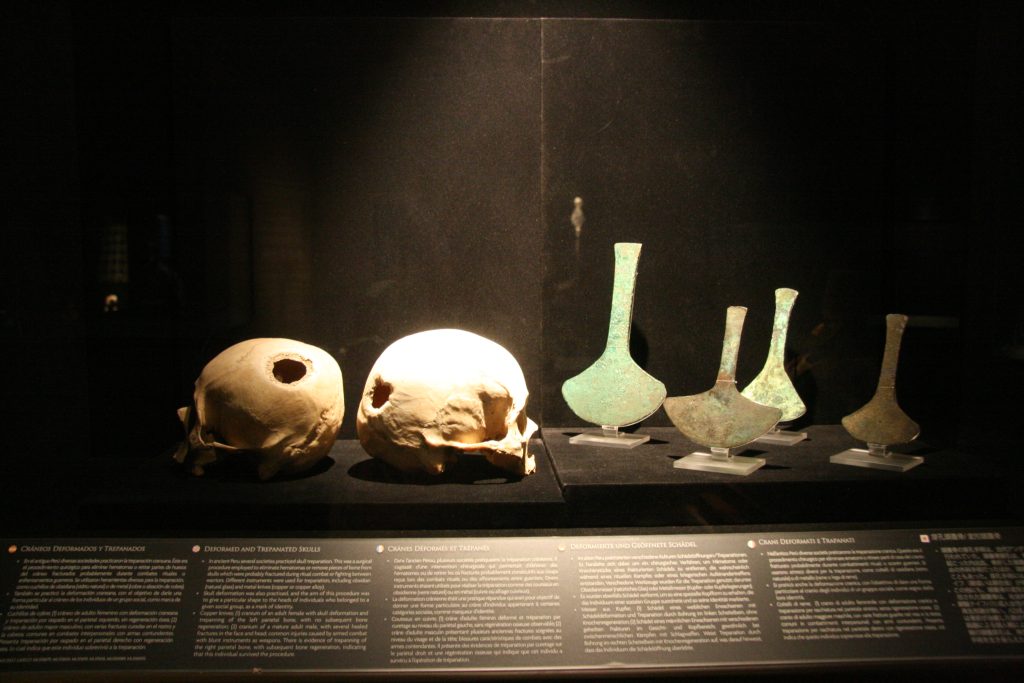Deformed and Trepanated Skulls
Room 10, Vitrine 126
Metal, bone
Peruvian Northern Coast
1250 BC – 1532 AD
ML100679, ML101604, ML101614, ML101616, ML500089, ML500092.
In ancient Peru several societies practiced skull trepanation. This was a surgical procedure employed to eliminate hematomas or remove pieces of bone from skulls which were probably fractured during ritual combat or fighting between warriors. These operations were also performed to relieve pain or other afflictions affecting the head. Trepanned skulls display evidence of bone regeneration after operating, which indicates that some individuals survived these procedures. Different instruments were used for trepanation, including obsidian (natural glass) and metal knives (copper or copper alloy).
Skull deformation was also practiced, and the aim of this procedure was to give a particular shape to the heads of individuals who belonged to a given social group, as a mark of identity.
Copper knives; (1) cranium of an adult female with skull deformation and trepanning of the left parietal bone, with no subsequent bone regeneration; (2) cranium of a mature adult male, with several healed fractures in the face and head; common injuries caused by armed combat with blunt instruments as weapons. There is evidence of trepanning of the right parietal bone, with subsequent bone regeneration, indicating that this individual survived the procedure.
